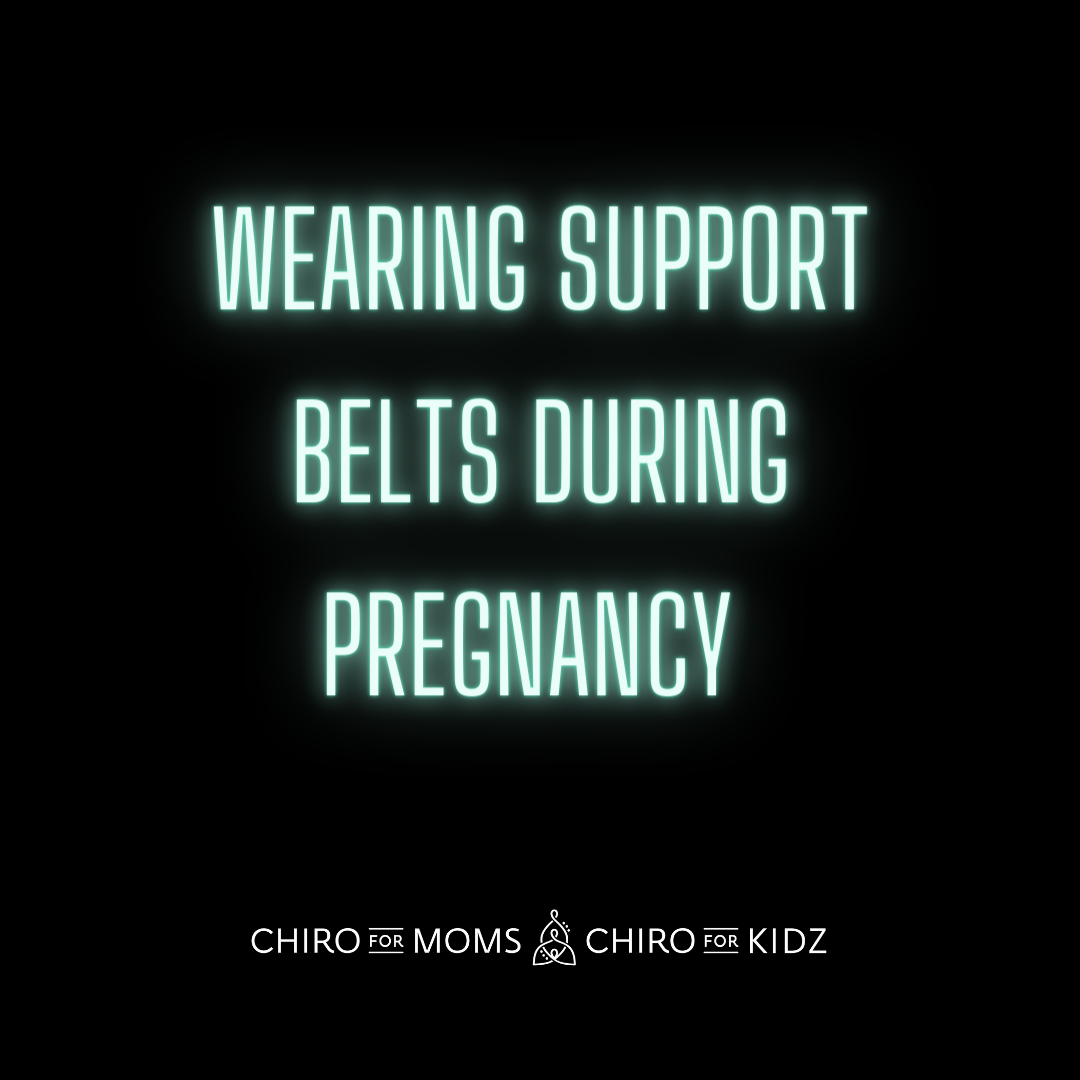Wearing support belts during pregnancy is a practical solution for pain relief at home when you’re battling low back pain, pelvic pain, pubic symphysis pain (SPD) or other pregnancy conditions. In this blog, we will walk through how you wear a belt during pregnancy + how it works! Video demonstration and graphics included!
Belly Band VS. SI Belt for Pregnancy
A sacroiliac belt or SI belt is a belt or brace that adds support to the pelvis and low back by adding stability to the joints. SI Belts are also referred to as ‘lumbosacral belts’. Stability is added to the pelvis and low back by compressing joint spaces, which restricts unwanted mobility. The key joint affected is the sacroiliac joint that connects the tailbone to the hips.
A belly band is supportive but in a different way. Belly bands lift up on mom’s belly taking some of the work away from the posture muscles. However, there is more risk of postpartum issues, like postpartum low back pain, if you aren’t allowing your posture muscles to work enough! Muscles that are underworked become weak and less coordinated in movement patterns. A weak core can cascade into lingering low back pain and other pain conditions postpartum. Consider a belly band if your primary compliant is low back pain and general aches from fatigue. The belly band should reduce fatigue, but it will likely not improve muscle spasms.
More often than not, we recommend SI belts to patients battling pelvic girdle pain, low back pain, and pubis symphysis dysfunction during pregnancy. And thats what we are going to dive into more below!

How to Wear a Pregnancy Belt
Support belts aren’t something you need to be in all day, in fact you shouldn’t be! The belt restricts motion in the pelvis which can be helpful, especially during pregnancy when our pelvis is wobbly from the hormone relaxin [more on this below]. However, we also want our pelvis to stay mobile and adaptable. Because of this fragile balance, we recommend women wear belts when they are active and doing bending & twisting motions. Think house work, playing with the kids, intense exercise, stairs, etc. Then, when you’re sitting [working at a desk, watching tv, etc.], sit on an exercise ball to help the pelvis ligaments stay mobile. Use the ball — tilt the pelvis forwards & backwards, rock side to side, and practice figure 8’s.
** Video**
Belt Wearing Tips
- You want the belt to sit a lot lower than you think. The belt will be right above the tailbone & track over the true hip and crotch bone in the front.
- There should be quite a bit of tension. It's helpful if you have a partner.
- We like belts that are less robust//cumbersome because you can get enough tension to hold the pelvis without a lot of material restricting too high or too low.
Wearing a Belt for Back Pain in Pregnancy
Pregnancy belts are commonly used to help relief low back pain in pregnancy, but how does it help?
Many times, low back pain that women experience actually stems from pelvis not the low back. During pregnancy, there is often times pelvic dysfunction and pelvic instability that contribute to low back pain complaints. The extra pelvic laxity or instability is the effect of the hormone relaxin, which is elevated through pregnancy & postpartum.
With the sacroiliac belt or pregnancy belt we can add stability to the pelvis. The additional support at the pelvis reduces the stress on the low back [the lumbar spine] and overworked muscles are able to relax.
Pregnancy Belt for SPD
If you are battling SPD… you NEED a sacroiliac belt for pregnancy. SPD is the acronym used for symphysis pubis dysfunction or pubis symphysis dysfunction. The hallmark of this condition is crotch or pubic bone pain that can travel into the groin. There is normal separation of the pubic symphysis joint during pregnancy. However, in some women, the separation happens quickly, unevenly, or excessively, which further contribute to pelvis instability and SPD.
And this is where a pregnancy belt comes in.. Like we’ve mentioned it adds stability to the pelvis! It doesn’t just aid the ligaments on the back side of the pelvis, it also helps the ligaments on the front side.
Wearing a Belt for Pelvic Girdle Pain
Pelvic girdle pain is the general term used to describe pain or discomfort in the pelvis. That may sound vague… and that’s because it is. Pelvic girdle pain can be anywhere in the pelvis, such as the pain in the pubic region, tailbone pain, sacroiliac joint pain.
Wearing the SI belt low and snug around the hips stabilizes the sacroiliac joints and reduces pelvic girdle pain in pregnancy. The belt acts as a external ‘ligament’ of sorts to hold the joints in a normal rand of motion. When motion is restricted to its normal range, tight muscles can relax and pain is reduced.
:::::::::::::::::::::::::::::::::::::::::::::::::::::::::::::::::::::::::::::::::::::::::::::::::::::::
*** As always don't hesitate to reach out with questions /// thoughts surrounding this topic! ***
Just email us : team@chiroformoms.com
Instagram: @chiro_for_moms
p : 952-378-1085 | f : 612-999-1983

